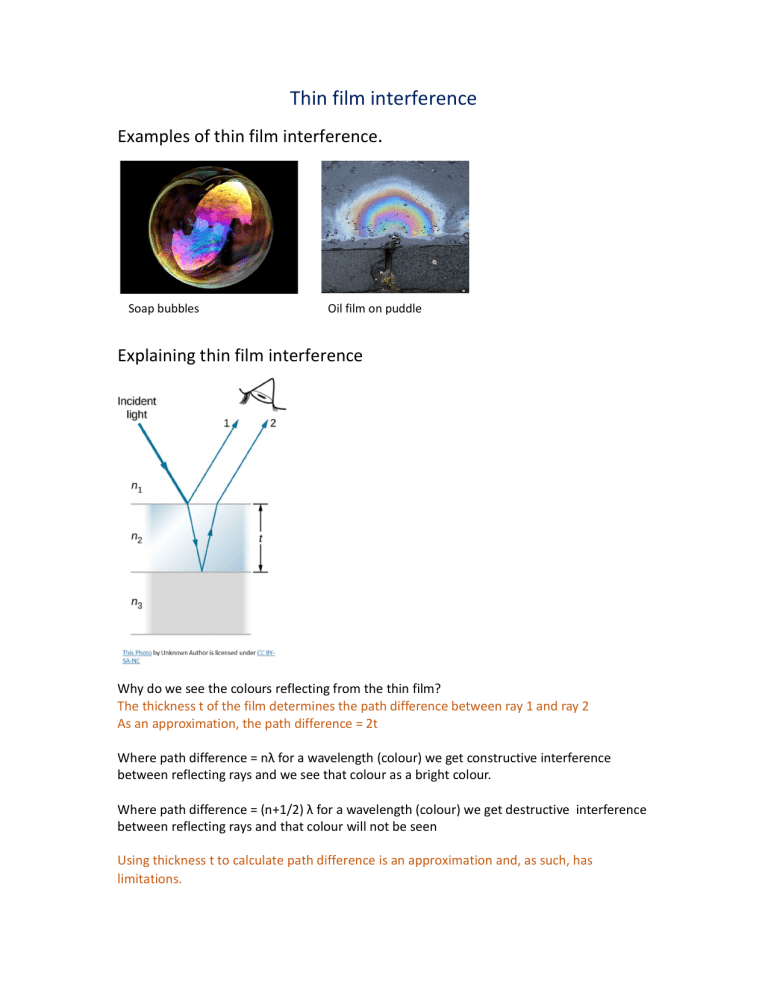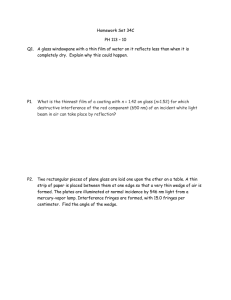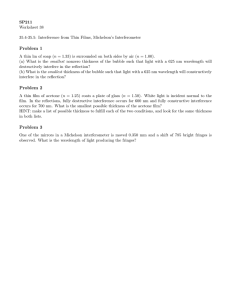
Thin film interference Examples of thin film interference. Soap bubbles Oil film on puddle Explaining thin film interference Why do we see the colours reflecting from the thin film? The thickness t of the film determines the path difference between ray 1 and ray 2 As an approximation, the path difference = 2t Where path difference = nλ for a wavelength (colour) we get constructive interference between reflecting rays and we see that colour as a bright colour. Where path difference = (n+1/2) λ for a wavelength (colour) we get destructive interference between reflecting rays and that colour will not be seen Using thickness t to calculate path difference is an approximation and, as such, has limitations. Phase changes at boundaries Thin film interference occurs between the light reflected from the top and bottom surfaces of a film. In addition to the path length difference, there can be a phase change. When light reflects from a medium having a refractive index greater than that of the medium in which it is traveling, a 180º phase change (or a λ/2 shift) occurs. This could mean that one or both of the surfaces has a phase change on reflection. Example Soap bubble: Top boundary: airoil = 180 phase change (λ/2 shift) Bottom boundary: oilair = no phase change (no shift in λ). Uses of thin film interference Camera lenses are coated with a thin film to reduce reflections and increase transmission. This Photo by



